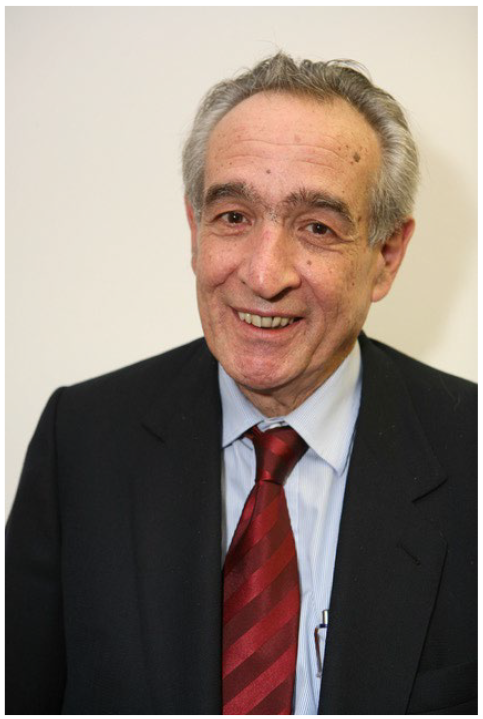Professor Anton Valavanis, a leader in Swiss Neuroradiology and Neuroscience and the founder and past president of the Swiss Societies of Clinical Neurosciences and Neuroradiology, died after a long and courageous battle with disease on 30 May 2023.
Born in Athens, Greece, on 1 January 1952, he would become a national and international expert in his field and help to position both his specialty and the clinical neurosciences in Switzerland at a high level. Both our societies hereby wish to honor his achievements.
A leader in Neuroradiology:After medical studies at the University of Zurich (UZH), he trained in Radiology and Neuroradiology at the USZ. In Zurich, he was born into the long-standing tradition of clinical and basic neurosciences; while initially focusing on establishing excellence in diagnostic neuroradiology, especially in the region of the head and neck, he would then establish interventional neuroradiology in Zurich. Indeed, he would be one of the first to implement MRI in clinical routine in order to improve diagnostic yield in patients with diseases of the central nervous system. He would ascend through the clinical and academic ranks of the University of Zurich and Zurich University Hospital, becoming head of Neuroradiology and Professor of Neuroradiology in 1994, positions that he would maintain until his retirement in 2017. He was awarded the scientific prize of the European Society of Neuroradiology (ESNR) in 1983. And in 1991, he was the President of the 17th Congress of the ESNR in Zurich.
In 1988, he would found the Swiss Society of Neuroradiology (SSNR) together with a then-small group of Swiss pioneers in neuroradiology: Peter Huber from Bern, Ernst-Wilhelm Radü from Basel, and Othmar Schubiger from Zurich. He would be president for 15 years over two terms of the SSNR. In this function, he would organize and structure the way in which neuroradiology is practiced and taught today.
Thus, in Switzerland, there now is a system of board certification in Neuroradiology in which training is performed in centers accredited by the SIWF (the Swiss institute for training, which is a branch of the Swiss medical association, the FMH) with a clear curriculum guided by a log-book along with two examinations, one in diagnostic and one in interventional neuroradiology He also established the long-running Zurich Course in Interventional Neuroradiology, which was held annually and where an international faculty and audience would meet to present and discuss the newest developments in the multidisciplinary managements of diseases of the central nervous system.
During his time as president of the SSNR, Switzerland would see the development of many neuroradiology units and centers.
Additionally, he founded the Swiss journal “Neuroradiologia Helvetica”, which, for many years, reported on the state of neuroradiology in Switzerland. He served on the editorial board of the Journal of Neuroradiology and was active in multiple national and international committees.
A leader in Neurosciences: An ardent defender of the Neurosciences and of independent Neuroradiology being part of it, he would become the director of the clinical neuroscience center in Zurich; and, together with Claudio Bassetti, Christian Hess, and Gerhard Hildebrand, he was one of the founders of the Swiss federation of Clinical Neurosocieties, of which he was the second president. Due to his clinical and academic achievements, he was also a promotor of interdisciplinarity in the clinical neurosciences. This led, along with Claudio Bassetti, to the foundation of this journal, Clinical and Translational Neuroscience, of which he would remain deputy editor until he passed away.
Academically, he has had an enormous impact on Swiss and international neuroradiology and the neurosciences in general. He has published extensively in our field and in that of clinical neurosciences, with over 200 papers to his name as well as two monographs, with a scientific output that covers both diagnostic and interventional neuroradiology.
In recognition of his excellence and service to his specialty, neuroradiology, he became an honorary member of the SSNR in 2018. An honorary medal was established by the same society in his name to be given out every two years to a neuroradiologist who has continued to make progress in neuroradiology both academically and clinically, in the way he envisioned it; this medal has been awarded twice, to Professors Luc Picard and Georges Rodesh, and will be awarded again in 2024. In recognition of his excellence as an interventional neuroradiologist, the newly opened neuro-angiography room at the USZ was given his name.
The Swiss neuroscience community, the SSNR, and the SFCNS wholeheartedly extend our condolences to his wife, Susanne Valavanis; his two daughters, Alexandra and Eleni; and friends.








